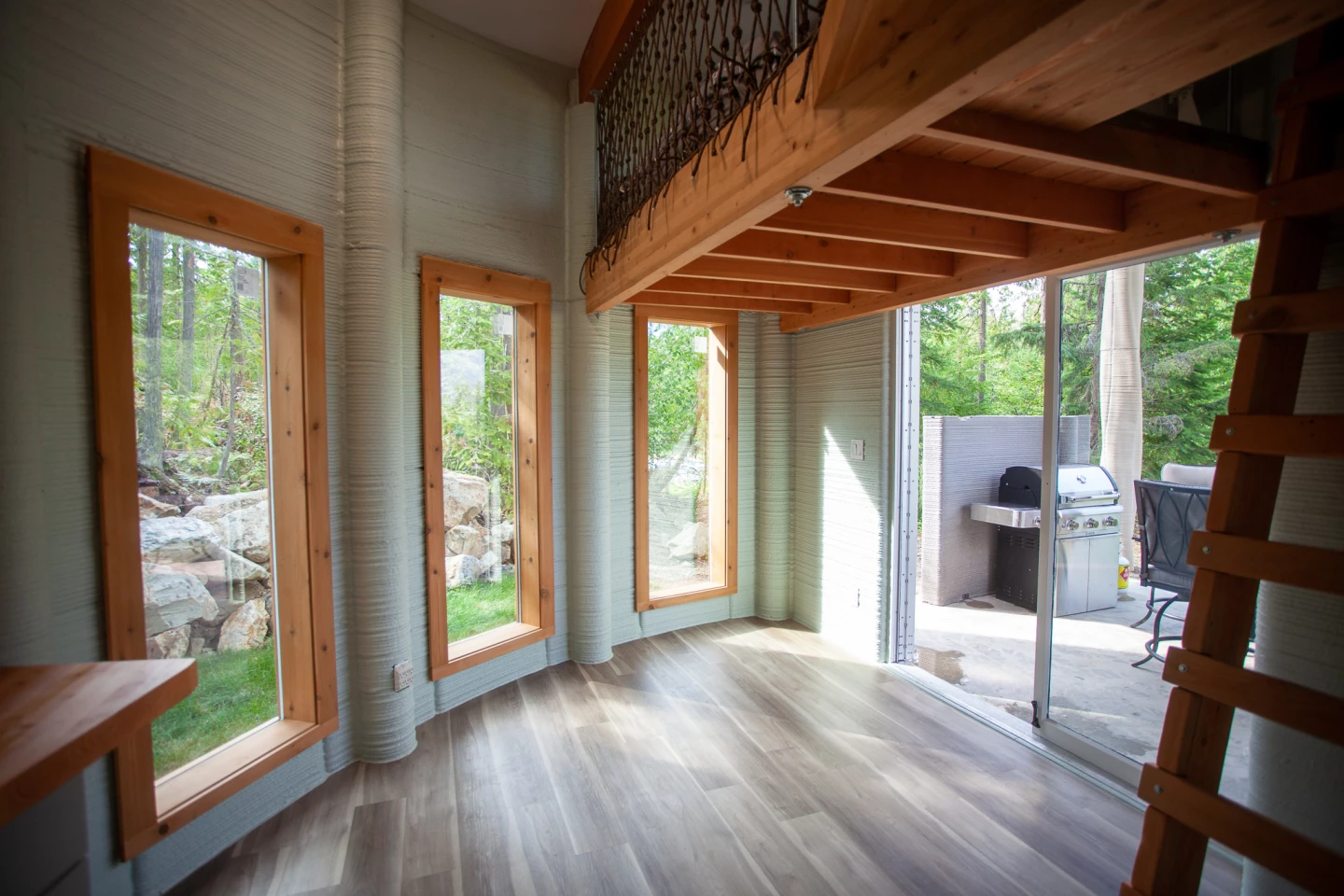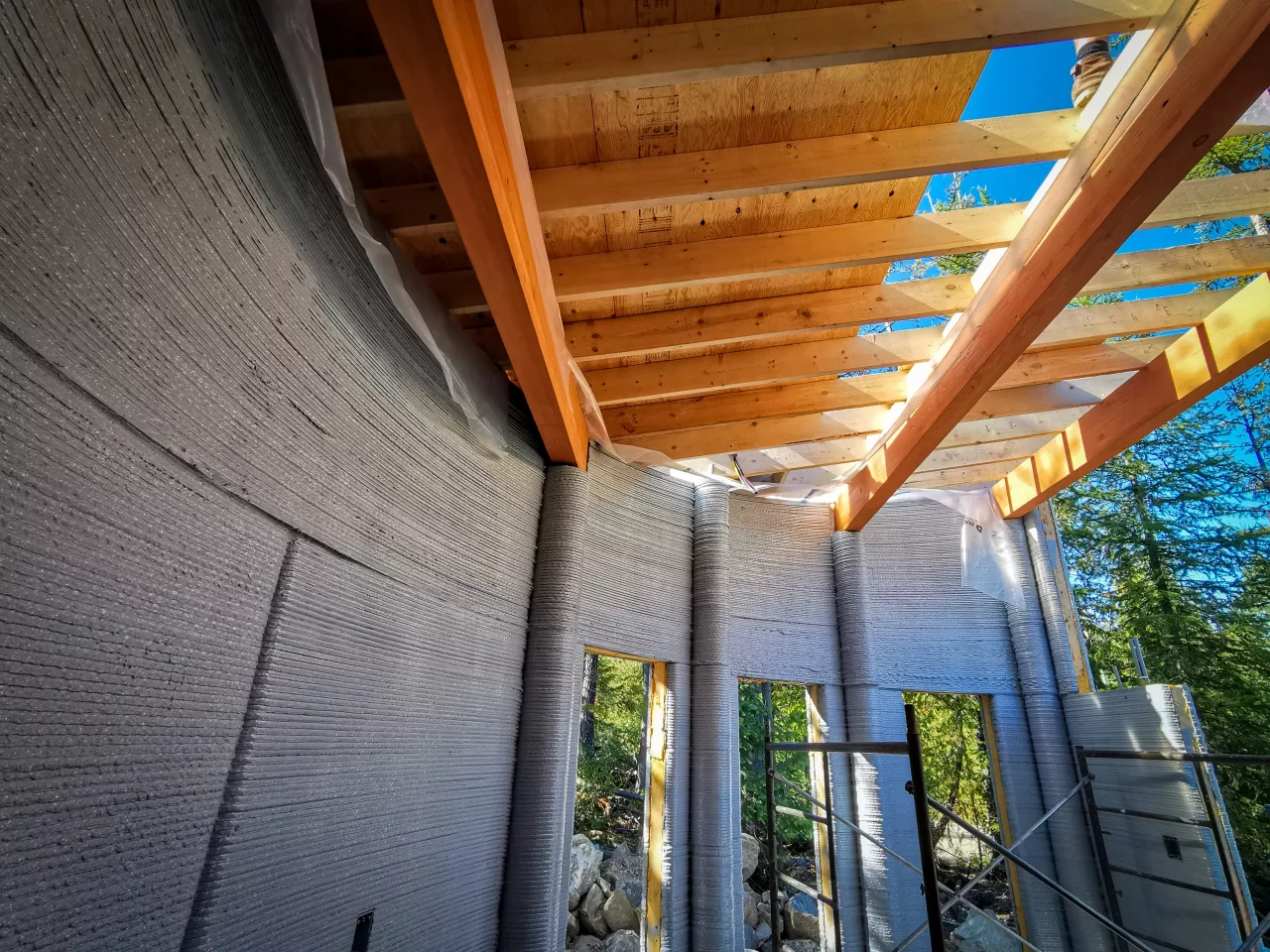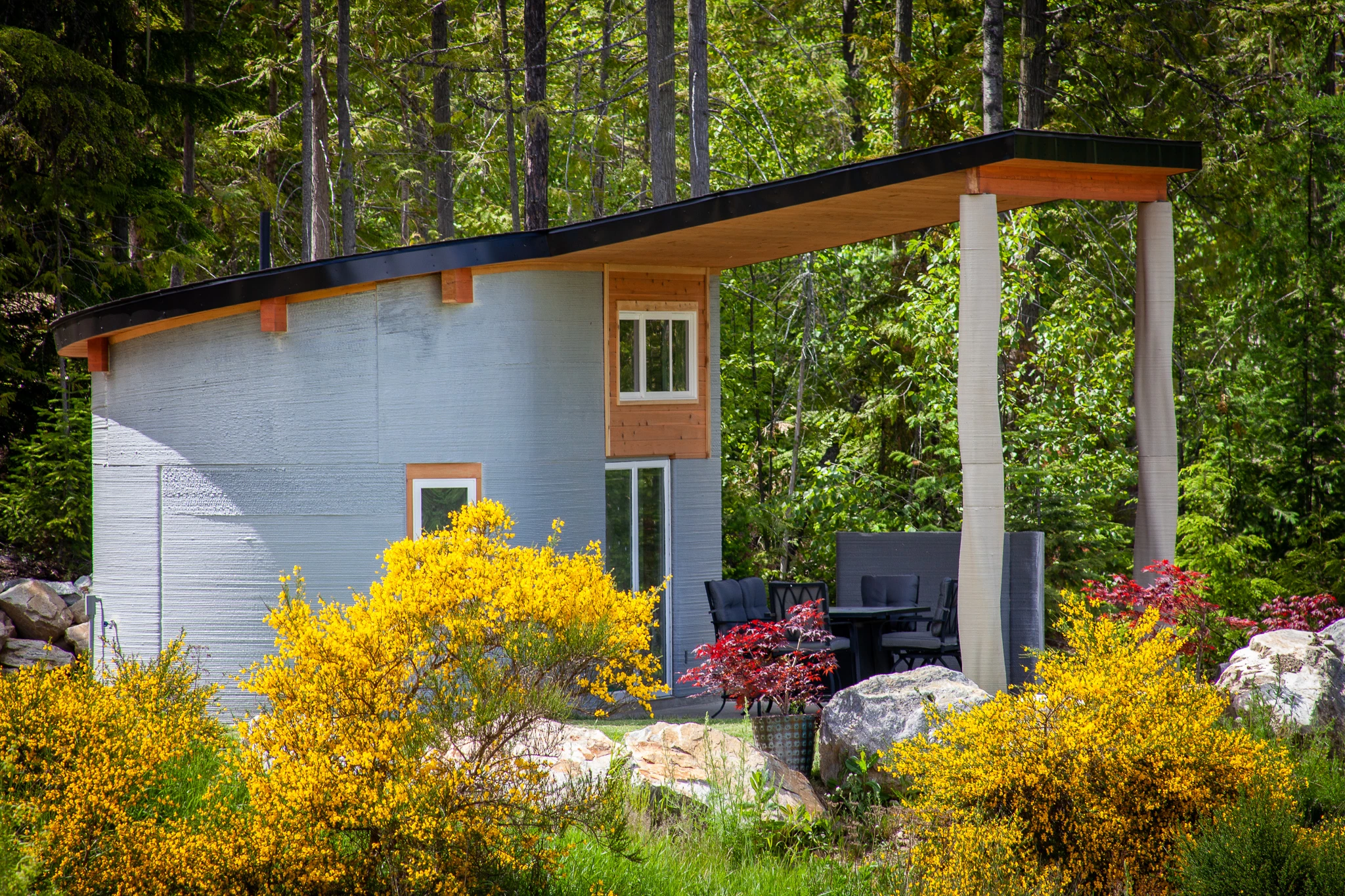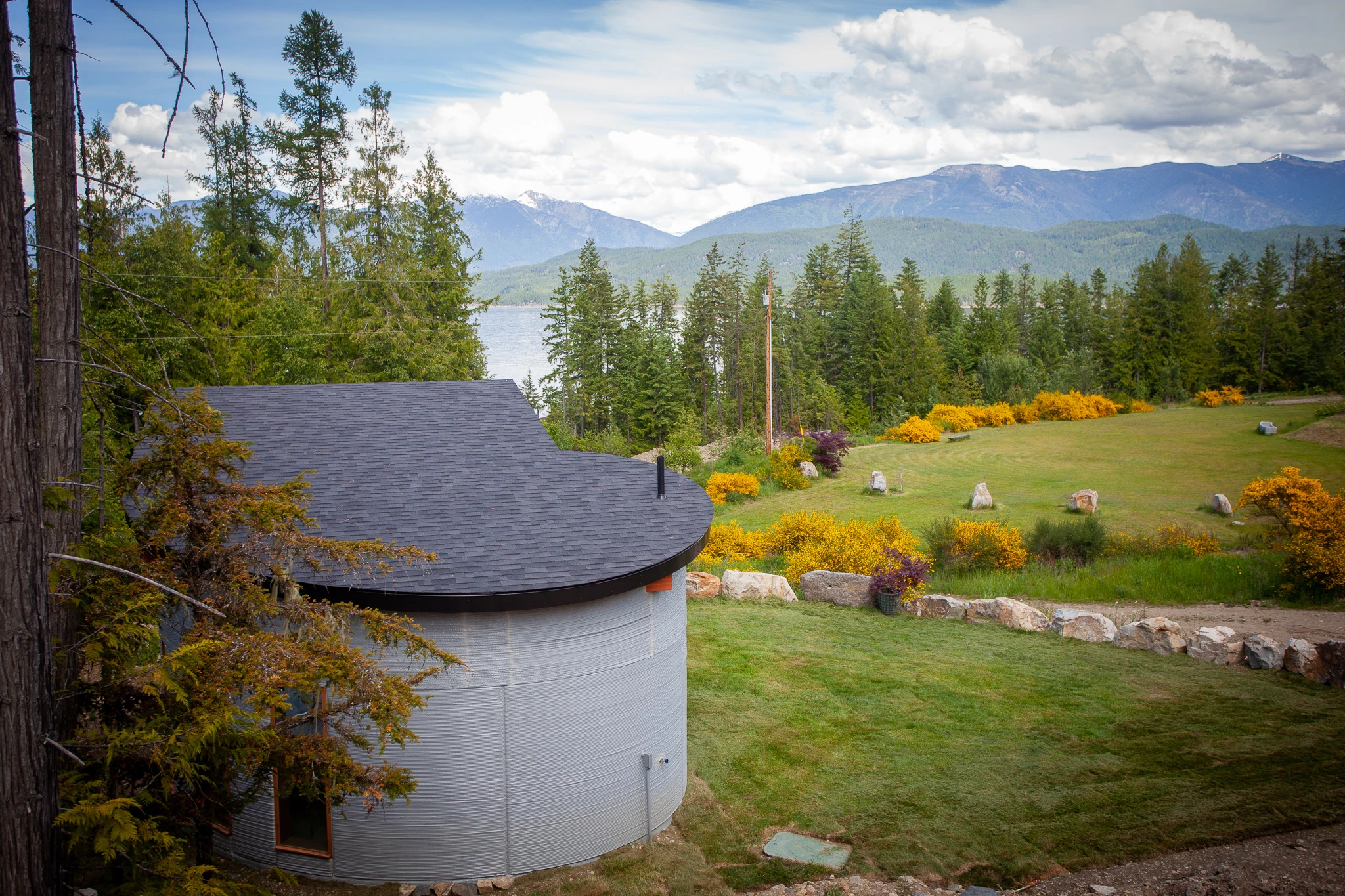It has inspired yachts, cars, and countless buildings, and now the Fibonacci number sequence has served as muse to 3D-printing firm Twente Additive Manufacturing (TAM), which has created what it calls Canada's first 3D-printed home. Named the Fibonacci House, it's a non-towable concrete tiny house that sleeps up to two adults and two children, and is available for rent on Airbnb.
'The Fibonacci House was printed using a concrete printer designed and sold by Twente Additive Manufacturing, a construction-technology company,' explains the firm. "The design of the house was created using the Fibonacci Sequence, a well-known pattern that is often referred to as 'the golden ratio' which can be found in nature in numerous variations: in shells, flower petals, leaf formations, etc. The Twente Team was inspired by this ancient pattern that has always intrigued people of science, of art and of nature throughout history immemorial."

The Fibonacci House brings to mind Apis Cor's tiny house in Russia and is actually a tad smaller than that home at just 35 sq m (376 sq ft). Its interior decor is simple and much of the available space is taken up by a living area with generous glazing that shows off the view of the beautiful Canadian countryside. Nearby are a kitchenette and a bathroom with shower, sink, and toilet. There are two sleeping areas, both up in the mezzanine area of the home and both reached by ladder. There's also a small covered porch area outside with some seating.
The build process was similar to other 3D-printed architecture projects we've reported on. A 3D printer extruded a cement mixture, layer by layer, building up the basic structure of the home in sections over 11 days. Once finished, the sections were then joined together by human builders, with the help of a crane, and then they finished off the home with handmade window frames, a door, roof and furniture, as well as wiring and plumbing, etc.

The Fibonacci House is located in the Kootenay Lake Village community at Procter, British Columbia in Canada, and is available for rent on Airbnb, with profits going to the international home building charity World Housing.
Source: TAM














